Moringa Herbal Medicine
Moringa uses, health benefits, side effects, warnings.of use.
Moringa (Moringa Oleifera),Moringa oleifera Lam (Moringaceae)
is a highly valued plant, distributed in many countries of the tropics
and subtropics.such as the Philippines, India and Africa. Moringa is
widely used as vegetable ingredient in cooking, as herbal medicine for a
number of illness and other practical uses. Moringa contains proteins,
vitamins, and minerals. As an anti-oxidant, it has activity to help
protect cells from damage.
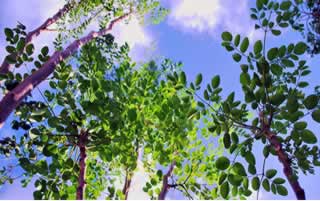
Moringa Scientific Name : Moringa Oleifera
Also known as: "Malunggáy" in
Philippines, "Sajina" in India, "Shojne" in Bengal, "Munagakaya" in
Telugu, "Shenano" in Rajasthani, "Shevaga" in Marathi,
"Nuggekai" in Kannada, "Drumstick Tree, Horse Radish Tree, Ben Oil Tree" in English, "La mu" in Chinese.
The Moringa plant can grow to as high as 9 meters with erect
white trunks. The compound leaf has about 3 to 9 leaflets. Moringa has
white fragrant flowers that produces long pods with 3-angled winged
seeds.
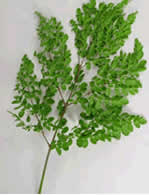
Moringa
may be propagated by planting its seeds about an inch in the ground or
matured Moringa stem cuttings of about 3 feet in length may also be
planted into the ground. Planted Moringa cuttings grows faster compared
to planted seeds.
Moringa (Moringa Oleifera)
has been used as herbal medicine in many cultures for hundreds of
years, Moringa is known as a very nutritious plant where it is used to
combat malnutrition in third world countries especially for infants and
nursing mothers.
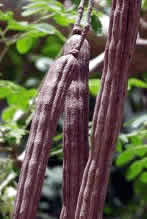
Moringa has an impressive range of medicinal uses and health benefits,
with high nutritional value. The Moringa plant provides a rich and rare
combination of zeatin, quercetin, beta-sitosterol, caffeoylquinic acid
and kaempferol. Moringa oleifera act as cardiac and circulatory
stimulants, possess antitumor, antipyretic, antiepileptic,
antiinflammatory, antiulcer, antispasmodic, diuretic, antihypertensive,
cholesterol lowering, antioxidant, antidiabetic, hepatoprotective,
antibacterial and antifungal activities, and are being employed for the
treatment of different ailments in the indigenous system of medicine,
particularly in South Asia.
Moringa Health Benefits and Tradional Medicinal Uses
Moringa in Traditional and Folkloric Medicine
Moringa is widely believed to contain high value nutrients and
consumption of which promotes general well being. Moringa is also called
a "miracle tree" primarilly for the various health benefits it can
provide for almost all kinds of diseases and medical conditions. More
over almost all of its parts have use - from its roots, pods, seeds,
barks, flowers and leaves. Listed below are some of the traditional
health benefits of Moringa.
- Decoction of boiled roots used to wash sores, cuts, skin
ulcers, wounds and other skin diseases to alleviate pain and promote
healing.
- Moringa is also used for stomach and intestinal problems such as ulcers and constipation.
- Moringa roots and bark have been used as abortifacient.
- Moringa flower with soy milk is used as aphrodisiac and promote fertility for men.
- While Moringa roots are believed to suppress fertility, chewed as a contraceptive by women.
- Moringa roots are also used to treat snake bites,
- The juice from Moringa roots is used to treat ear related problems (otalgia).
- Moringa leaves pounded and combined with coconut oil is used to treat scalp problems and to promote hair growth.
- Boiled Moringa leaves contain immune boosting nutrients used in sickness recovery.
- Boiled Moringa leaves used to promote milk production in nursing mothers.
- Moringa leaves combined with honey and calamsi to treat cough and asthma
- Moringa is used as skin restorer to promote skin rejuvenation.
- Moringa soup is used to lower high blood pressure
- Moringa tea from bark or leaves is used to treat insomnia and restlessness.
- Moringa pod is chewed to treat and prevent intestinal parasites in children.
- Moringa is also recommended for sufferers of diabetes
- Moringa is consumed to strengthen the bones especially for growing children and older people due ot high calcium content.
- Moringa oil or poultice is used to treat bone and ligament
related conditions that involve inflammations such as gout, rheumatism,
back pain, sprains and all srts of swelling.
- Moringa is also used to improve eye problems. Believed to contain high amount of vitamin A, more than that of a carrot.
- Moringa is used along with other herbal medicines to treat cancer.
- Leaves and fruit used for constipation and as diuretic.
Science Based Health Benefits from Moringa
Moringa: Combat Malnutrition, used to combat
malnutrition, especially among infants and nursing mothers. Contains
vitamins A, B and C, calcium, iron and protein.
Moringa oleifera exerts protective effects against STZ-induced diabetes.
In a study published in the Journal of Diabetes (2012) entitled
"Evaluation of antidiabetic and antioxidant activity of Moringa oleifera
in experimental diabetes" has shown the significant antidiabetic and
antioxidant activity of the extract in mice subjects.
Moringa: Anti infectious: Antibacterial; Anti Fungal, . In late 1940's, The
Department of Biochemistry at the Indian Institute of Science in
Bangalore (PLN Rao) have found that Moringa or Moringa Oleifera leaves
contain
a compound "pterygospermin" that is known in medical science as having antimicrobial, antibacterial, anti fungal properties.
Moringa: Treatment for Hyperglycemia and Dyslipidemia.
A review relating to the "Therapeutic Potential of Moringa oleifera
Leaves in Chronic Hyperglycemia and Dyslipidemia" was published in
Frontiers in Pharmacology (2012) suggests the efficacy of Moringa leaves
in the treatment of hyperglycimia and diabetes.
Moringa: Cancer Treatment and Prevention.
Moringa or Moringa has been shown in studies to have an anti-tumor
capacity. Moringa contains benzyl isothiocyanate. There are many studies
that have shown this chemical and compounds derived thereof to have
anti-cancer and chemoprotective capabilities. This chemoprotective
aspect is critical for those who are battling
cancer;
this helps strengthen cells so that they can tolerate chemotherapy.
Moringa is also considered in the treatment of prostate cancer and skin
cancer.
(Ref: Fuglie LJ (2000) New Uses of Moringa Studied
in Nicaragua. ECHO Development Notes #68,
June, 2000. ttp://www.echotech.org/network/modules.php?
name=News&file=article&sid=194)
Moringa: Anti-Inflamatory Activity: Moringa
has been found to inhibit inflammation in a controlled scientific study
conducted by Philippine DOST Scientists (Amelia P. Guevara, Carolyn
Vargas and Milagros Uy). When an aquous seed extract of Moringa has been
administered to a carrageenan induced inflammation, its was noted that
the aquous seed extract of the Moringa (Moringa Oleifera) inhibited the
development of edema in ratpaw. The Moringa is traditionally used to
prevent and treat inflammations associated with rheumatism, arthritis
and joint pains.
Moringa: Regulation of Thyroid hormone. A
study regarding the "Role of Moringa oleifera leaf extract in the
regulation of thyroid hormone status in adult male and female rats" as
published in
Pharmacological Research (200) suggests the possible health benefits of a lower concentration of moringa extract against hyperthyriodism.
Moringa - Reproductive health. Fuglie LJ
(1999) The Miracle Tree: Moringa oleifera: Natural Nutrition for the
Tropics has reported that Moringa or Moringa Oleifera is widely believed
to have an aphrodisiac action that enhances the sexual activity.
Moringa or moringa oleifera young leaves is also widely used to increase
the flow of milk for lactating mothers.
Moringa Preparations, Usage and Side Effects
Moringa Herbal Medicine Preparation and Usage
Moringa as food. Moringa pods may be eaten
raw or may also be fried with peanut similar taste. Moringa leaves and
flower may also be cooked together with other vegetables and meat to
form soups or viands.
Moringa decoction for washing sores and wounds,
Boil Moringa roots and let it cool to tolerable warm temperature and
use it to wash wounds and sores. By gargling the Moringa decoction, it
may also be used to wash mouth sores and sore throats.
Moringa poultice. Grounded Moringa seeds, leaves and bark may be applied topically as poultice onto swollen flesh to relieve inflammation.
Moringa oil may be taken internally as mixed
with foods, it is known to be a powerful antioxidant even used by the
early people from Egypt. Moringa oil also known as Ben oil is widely
used as oil base for perfumes and cosmetics. The oil is extracted from
Moringa seeds by pressing.
Moringa Tea Preparation
as shared by Ms. Rhea Rodrigo - from comments thread below
- Pick out 4 to 5 branches from the tree. Choose those with lots of leaves.
- Place them on a tray and leave in a dry place anywhere in
your home for 3-4 days or until the leaves dry up and become crumpled.
No need for sunlight.
- Pick out the crumpled leaves from the twigs and place in a dry pan over a low fire. Do not place water or oil in the pan.
- Cook the leaves, turning them over with a cooking spoon so
that the leaves are cooked evenly. They are cooked when they are toasted
but not burned.
- Store the cooked leaves in any container with a cover.
- To make the tea, take a tablespoon of the cooked leaves from
the container and place in a cup of hot water. Let sit until the water
absorbs the green color and nutrients of the leaves. It takes the same
amount of time as making ordinary tea from tea bags.
- Remove the leaves from the cup.
- Option: add honey.
Where to Get Moringa?
Moringa tree can be found in the wild as well as culitvated in
warm ttopical countries. The pods and leaves are harvested and are sold
in wet markets and in the vegetable section in Asian grocery stores.
For other countries where Moringa trees don't grow, food grade
preparations in forms of powder, tablets, syrups and capsules can be
bought in respected health stores and Asian stores. Liniments, creams
and lotions containg Moringa oil may also be available.
There are few online stores that sell Moringa tablets and capsules, Amazon is one, a sample product is
Organic Moringa Powder 120 Veg Capsules.
We do not endorse this product just for sample purpose only, and there
are a ton of other related moringa products listed, we therefore suggest
that you examine carefully the background of the manufacturer and
analyze product reviews to be certain of quality.
Moringa Warnings and Side Effects
Although Moringa consumption is generally accepted as safe. But
according to Indian traditional usage, Moringa may have an
abortificient effects.
(Ref: Nath D, N Sethi, et al. (1997) Survey on
indigenous medicinal plants used for abortion in
some districts of Uttar Pradesh. Fitoterapia 68(3):
223-225)
Moringa Herbal Medicine: Useful References
NCCAM Clearinghouse. The NCCAM
Clearinghouse provides information on CAM and NCCAM, including
publications and searches of Federal databases of scientific and medical
literature. The Clearinghouse does not provide medical advice,
treatment recommendations, or referrals to practitioners.
Toll-free in the U.S.: 1-888-644-6226 TTY (for deaf and hard-of-hearing callers): 1-866-464-3615 Web site: nccam.nih.gov
E-mail: info@nccam.nih.gov
PubMed®
A service of the National Library of Medicine (NLM), PubMed®
contains publication information and (in most cases) brief summaries of
articles from scientific and medical journals. CAM on PubMed®, developed
jointly by NCCAM and NLM, is a subset of the PubMed® system and focuses
on the topic of CAM.
Web site:
www.ncbi.nlm.nih.gov/sites/entrez
CAM on PubMed® : nccam.nih.gov/research/camonpubmed/
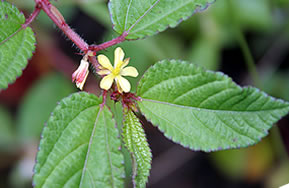
 Saluyot being rich in vitamins and minerals generally promotes good health and well-being.
Saluyot being rich in vitamins and minerals generally promotes good health and well-being.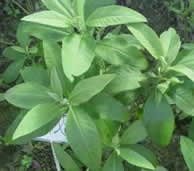
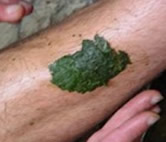 Sambong tea are also used as herbal medicine for colds and coughs.
Sambong tea are also used as herbal medicine for colds and coughs.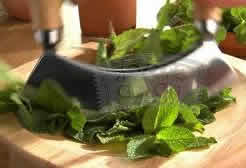
 Sambong poultice
Sambong poultice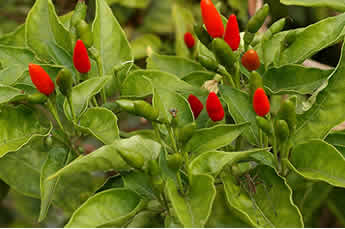
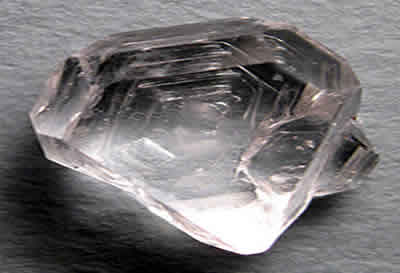

 Moringa
may be propagated by planting its seeds about an inch in the ground or
matured Moringa stem cuttings of about 3 feet in length may also be
planted into the ground. Planted Moringa cuttings grows faster compared
to planted seeds.
Moringa
may be propagated by planting its seeds about an inch in the ground or
matured Moringa stem cuttings of about 3 feet in length may also be
planted into the ground. Planted Moringa cuttings grows faster compared
to planted seeds. Moringa has an impressive range of medicinal uses and health benefits,
with high nutritional value. The Moringa plant provides a rich and rare
combination of zeatin, quercetin, beta-sitosterol, caffeoylquinic acid
and kaempferol. Moringa oleifera act as cardiac and circulatory
stimulants, possess antitumor, antipyretic, antiepileptic,
antiinflammatory, antiulcer, antispasmodic, diuretic, antihypertensive,
cholesterol lowering, antioxidant, antidiabetic, hepatoprotective,
antibacterial and antifungal activities, and are being employed for the
treatment of different ailments in the indigenous system of medicine,
particularly in South Asia.
Moringa has an impressive range of medicinal uses and health benefits,
with high nutritional value. The Moringa plant provides a rich and rare
combination of zeatin, quercetin, beta-sitosterol, caffeoylquinic acid
and kaempferol. Moringa oleifera act as cardiac and circulatory
stimulants, possess antitumor, antipyretic, antiepileptic,
antiinflammatory, antiulcer, antispasmodic, diuretic, antihypertensive,
cholesterol lowering, antioxidant, antidiabetic, hepatoprotective,
antibacterial and antifungal activities, and are being employed for the
treatment of different ailments in the indigenous system of medicine,
particularly in South Asia. 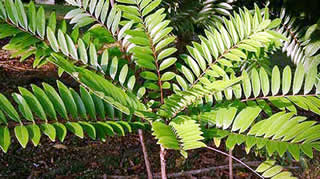
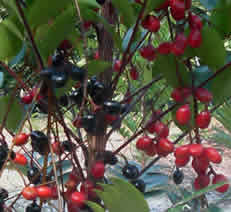 The
flowers are dioecious, with the male and the female flowers blooming in
different trees. Tongkat ali bears fruits that are originally green the
turns to red then dark red in color as it ripens. Tongkat ali fruit is
obloid in shape with length up to 2 cm and 1 cm in width
The
flowers are dioecious, with the male and the female flowers blooming in
different trees. Tongkat ali bears fruits that are originally green the
turns to red then dark red in color as it ripens. Tongkat ali fruit is
obloid in shape with length up to 2 cm and 1 cm in width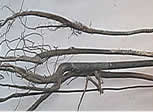 Tongkat ali roots. The roots has the most health benefits and is widely used. Root extract of Eurycoma longifolia are
used for sexual dysfunction, aging, malaria, cancer, diabetes, anxiety,
aches, constipation, exercise recovery, fever, increased energy,
increased strength, leukemia, osteoporosis, stress, syphilis and
glandular swelling.
Tongkat ali roots. The roots has the most health benefits and is widely used. Root extract of Eurycoma longifolia are
used for sexual dysfunction, aging, malaria, cancer, diabetes, anxiety,
aches, constipation, exercise recovery, fever, increased energy,
increased strength, leukemia, osteoporosis, stress, syphilis and
glandular swelling. 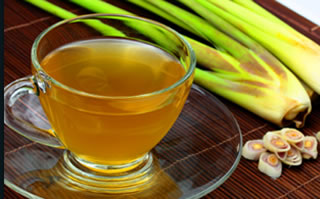
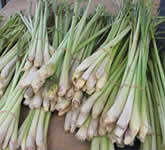 Lemon
grass thrives in the wild even without too much care. It can be grown
in pots and gardens. The stalks and leaves are harvested and used. Fresh
Lemon grass can also be bought in most Asian markets by bundles.
Lemon
grass thrives in the wild even without too much care. It can be grown
in pots and gardens. The stalks and leaves are harvested and used. Fresh
Lemon grass can also be bought in most Asian markets by bundles.